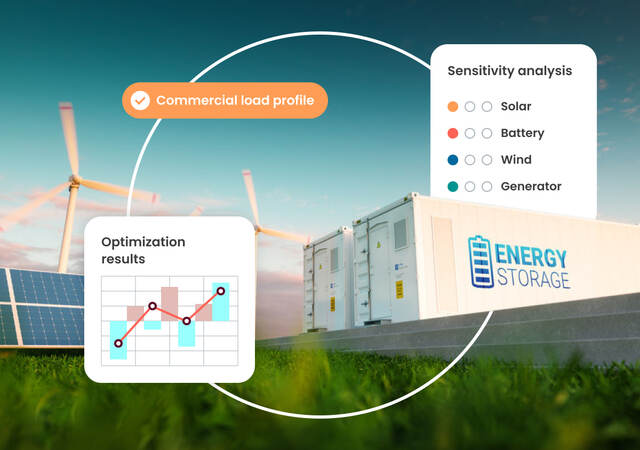April 11, 2022
UL, a global safety science leader, in partnership with the Tamarindo Group, convened a special stakeholder event in November 2021 to help assess the challenges involved in energy storage risk mitigation. The Wind Investment Boardroom discussion and subsequent report tapped the expertise of renewable energy developers, storage-related trade associations, banking and insurance industry executives and UL’'s in-house battery and energy system experts. Below, find highlights of the downloadable report.
The U.S. is poised to transition to a clean, reliable energy future, but success hinges on a rapidly evolving, robust energy storage sector that enables the U.S. electric grid to utilize massive wind and solar power, as industry leaders noted in the recent Wind Investment Boardroom discussion.
New, necessary legislation will help fight climate change. The $555 billion (USD) outlined in President Biden’s Build Back Better Bill supports the U.S. goal of reaching net-zero carbon emissions by 2050.
However, it will take more than money to transition to clean, renewable energy, according to the Wind Investment Boardroom report.
Energy storage plays a pivotal role in balancing renewable energy production with electricity demand, but we need to understand and mitigate financial and technical risks associated with batteries. Investors crave certainties when committing funding, but batteries represent an unfamiliar asset class for many potential investors — in part because of the ongoing innovation occurring in energy storage. For the clean energy transition to succeed, the industry needs a pathway to de-risking projects so the rapid deployment of batteries as an energy storage and dispatching source can continue.
Key takeaways from the report include the following:
- New technologies present three challenges to overcome: a limited track record, a lack of standardization and undeveloped economies of scale.
“That lack of standardization, and the bespoke nature of every single project, really slows things down and adds a significant amount of complexity and cost,” said discussion participant Sara Graziano, partner and chair of the investment committee at SER Capital Partners, a private equity firm focused on sustainable, environmental and renewable investments.
Additionally, funding criteria need expansion. Engie’s Director of Energy Storage, Annam Muthu, said the sector needs to understand how to add contracted revenue to projects and find sources for funding plants that are not only based on the prospect of merchant revenues. He suggested one option: co-locate storage projects with solar parks or wind farms.
- Understanding supply chain risks
Another financial risk lies in lithium-ion batteries’ vulnerability to supply chain shortages. North American power markets compete with the automotive industry’s growing demand for lithium-ion batteries in electric cars and a wide range of smaller consumer products.
“We are seeing non-lithium alternatives starting to capture market share because lithium doesn’t have the capacity to serve other markets as well,” commented Raafe Khan, director of energy storage at the project developer Pine Gate Renewables. However, new battery chemistries have even less of a track record in the marketplace, adding another potential risk for investors and insurers.
Uncertainty surrounds the question of whether the necessary supply chain commitments exist to follow through on large energy projects. The U.S. will need to resolve this to meet carbon reduction goals.
- Physical hazards such as fire
Lithium-ion batteries have caused several “runaway thermal events” — fires and explosions — in the past decade. The storage industry says that battery technology developed after some of the earlier fires has reduced the fire risk; now, the industry needs to demonstrate that risk reduction.
- Insurance and risk allocation
The combined challenges facing the energy storage industry make it difficult for the insurance industry to evaluate the financial risk and calculate protection value. Insurers perceive energy storage as an immature technology with a lack of operational experience.
Lack of standardization for battery names, descriptions and chemistries makes comparing one product to another difficult for insurers. The challenges include determining warranty coverage and how to insure service interruptions.
Beth Bremer, energy storage manager at the project financing and development firm Crossover Energy Partners, noted a need for universal performance standards. Ideally, they would provide commonality for original equipment manufacturers (OEMs) when measuring basic battery metrics such as round-trip efficiency.
Participants all agreed that the energy storage industry must continue to evolve, even while the insurance sector develops expertise in storage.
How to best reduce risks in energy storage?
One key risk reduction strategy: Standardizing technology and contract structures
Executive Director of the California Energy Storage Association (CESA) Alex Morris added that CESA is considering moves to standardize storage contracts. Still, standardization poses a challenge when technology continues to evolve.
A participant who leads technical due diligence for a large bank said his organization is exploring a variety of risk mitigation strategies, including:
- Asking for emergency action plans to share with first responders to mitigate liability
- Seeking continuity of operation plans from OEMs, including provisions for plant augmentation
- Installing third-party plant controllers that can handle assets from a range of battery vendors
- Requiring sponsors to provide reasonable downside scenarios on issues such as degradation
- Getting performance and accelerated lifetime test reports from independent laboratories
- Looking for operational data going back at least a year, from pilots, if not operating plants
- Requesting factory inspections
- Doing power flow estimations
Conclusion
Private energy stakeholders and trade associations recognize the risks of energy storage and are moving toward resolution on multiple fronts. We don’t yet know whether these efforts will allow the industry to move quickly enough to meet 2035 net-zero electricity goals.
David Mintzer, director of energy storage advisory services at UL, said that developing consistent practices from commissioning to operations will help stakeholders manage the evolution of energy storage.
“The need to be flexible is key,” Mintzer said.
For more information
Download the full report below.
See how HOMER Front software can help model battery degradation and other variables for utility-scale energy storage projects.
Learn more about the expertise provided through UL Renewables.
Get connected with our sales team
Thanks for your interest in our products and services. Let's collect some information so we can connect you with the right person.



